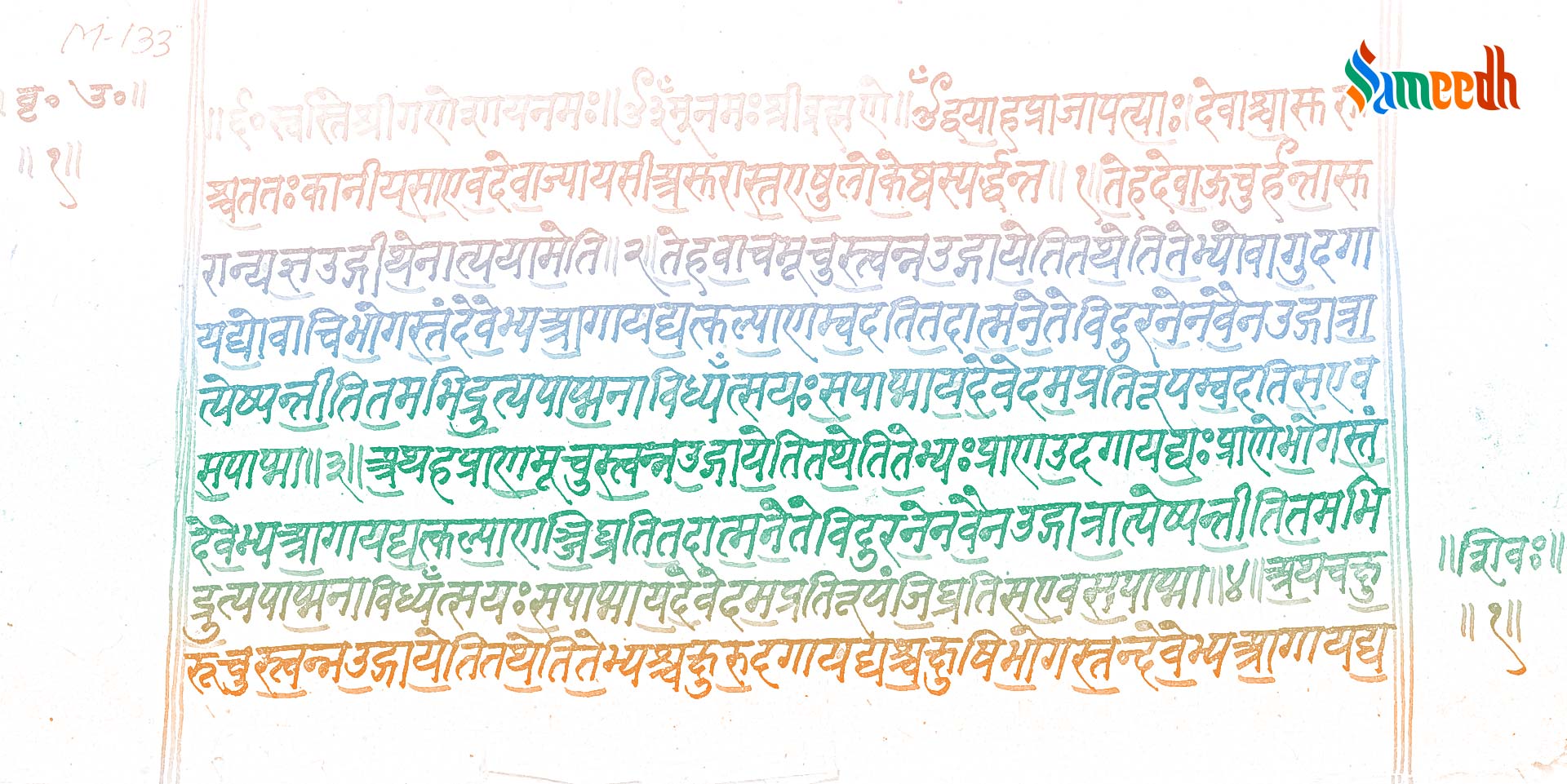The Brihadaranyak Upanishad offers the ultimate knowledge of life and human existence. It also teaches about the different ways of meditation to experience this knowledge.

Image Source: Ms Sarah Welch
What is Upanishad?
Upanishad is the scriptures that connect the knowledge given in the four Ved to common people’s lives and traditions. They are called Upanishad (sitting down closely) because Upa means ‘near’ and Shad means ‘to sit’. Many of the Upanishads are written in the style of a conversation between a Guru and a Shishya sitting near the feet of the teacher. Upanishad are aimed at bringing prosperity, enlightenment, and most to the common people’s lives. Every Upanishad is focused on the knowledge covered in one particular Veda from Rigveda, Samaveda, Shukla Yajurveda, Krishna Yajurveda, and Atharvaveda. In essence, they are a collection of philosophical texts that are considered to be some of the foundational texts of Hinduism.
The story of its inception
The legends say that Sage Yajnyavalkya had two wives – Maitreyi and Katyayani. Once, Sage Yajnyavalkya decided to go on a tapasya to attain higher knowledge. He then offered his both wives a share of his wealth. Katyayani was more interested in material wealth and property, while Maitreyi had an inclination towards spiritual studies. So, Maitreyi asked Sage Yajnyavalkya if all the material wealth in the world could make her immortal? Sage Yajnyavalkya explained her that every life comes to an end, and one can’t achieve immortality by any means. It is only the Atman that is immortal, not the body. Then Maitreyi asked for the knowledge of Atman and Brahman as her share of the wealth, to which Sage Yajnyavalkya agreed. And they begin a conversation.
The structure of Brihadaranyak Upanishad
The Brihadaranyaka Upanishad is an ancient Hindu scripture that is considered to be one of the oldest and most important of the Upanishads. It is one of the principal Upanishads that discusses the nature of ultimate reality and the relationship between the individual self and the ultimate reality. It is broadly divided into three parts: Madhu Kand, Muni Kand, and Khila Kand. Each part has two chapters, so the entire Brihadaranyak Upanishad consists of 6 chapters. These are the last 6 chapters of Shatapath Brahman. Each chapter is made of different numbers of sub-parts called ‘Brahman’. They are filled with numerous dialogues, anecdotes, philosophical discussions, and methods of meditation. It contains many teachings and discussions on a wide range of topics, including the nature of the ultimate reality, the nature of the individual self, the nature of the universe, and the relationship between the individual self and the ultimate reality. The Upanishad is known for its teachings on the concept of Brahman, which is the ultimate, supreme reality in Hindu philosophy, and for its discussions on the nature of the individual self and the relationship between the individual self and Brahman. The Brihadaranyaka Upanishad is an important text for anyone interested in the study of Hindu philosophy and the teachings of the Upanishads
The Knowledge of Brihadaranyak Upanishad
The Brihadaranyak Upanishad covers many Vedic theories and philosophies that guide a person towards a virtuous life dedicated to achieving the ultimate knowledge about the self and the universe. It touches upon almost all the aspects of human existence. Starting from the creation of the universe to the creation from universal self, from the unknowability of brahman to the truth about the soul, and from the three principles virtues of life to the ultimate journey after death – Brihadaranyak Upanishad explains the true nature of existence to everyone.
“Aham Brahmasmi” is a phrase that is found in the ancient Hindu scriptures known as the Upanishads. The Upanishads are a collection of philosophical texts that are considered to be some of the foundational texts of Hinduism. The phrase “Aham Brahmasmi” is found in the Brihadaranyaka Upanishad, which is one of the oldest and most important of the Upanishads. In this text, the phrase is used to express the idea that the individual self and the ultimate reality are one and the same.
The concept of Brahman, and the idea that the individual self is ultimately identical to Brahman, is a central theme in Hindu philosophy and is known as the doctrine of monism. This doctrine holds that there is ultimately only one reality, and that everything in the universe is an expression of this one reality. The concept of Brahman is therefore seen as the ultimate source and ground of all being, and the phrase “Aham Brahmasmi” is used to affirm one’s identity with this ultimate reality.
It is a Sanskrit phrase that is often translated as “I am Brahman.” Brahman is a term in Hindu philosophy that refers to the supreme, ultimate reality or consciousness that is the underlying ground of all being. The phrase “Aham Brahmasmi” is used as a way to affirm one’s identity with this ultimate reality, and to express the belief that one’s true self is not the individual ego, but rather the divine consciousness that pervades all things.